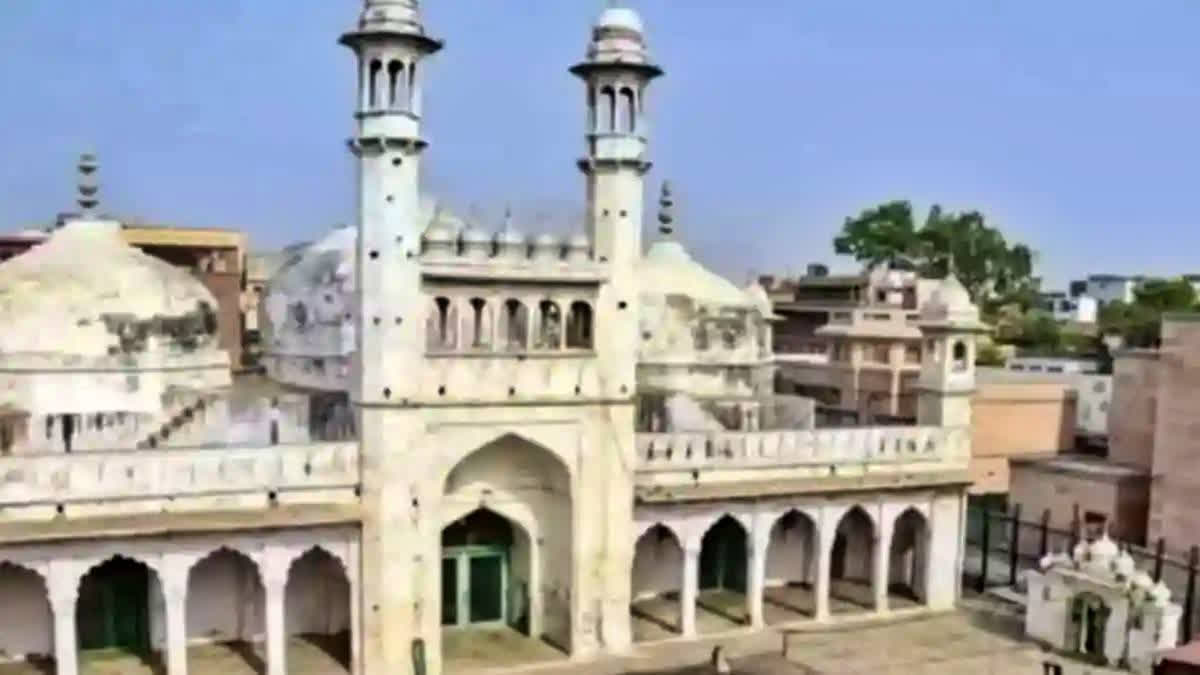Varanasi: Advocate Vishnu Jain, representing the Hindu side, said a report by the Archaeological Survey of India (ASI) suggests that a large Hindu temple structure existed at the Gyanvapi mosque complex in Varanasi. Jain read out the survey report on Friday after the Varanasi district court decided to provide both litigants with the 839-page survey report.
Top 10 points of ASI survey report
- According to Vishnu Jain, the ASI report, which included a Ground Penetrating Radar (GPR) survey suggested that the current structure seems to have been built upon a pre-existing structure.
- Citing the ASI report, Jain said that modifications were made to the mosque, reusing pillars from the Hindu temple and attempts were made to remove ancient carvings on the pillars.
- Jain said that the report also revealed inscriptions discovered at the ancient Hindu temple were written in Devanagari, Telugu, Kannada and other scripts.
- The ASI report claimed that the Arabic-Persian inscriptions found inside a room mention that the mosque was built in the 20th regnal year of Aurangzeb, that is 1676-77 CE. According to this finding, the pre-existing structure appeared to have been destroyed in the 17th century, during the reign of Aurangzeb.
- Existing architectural remains, karna-ratha and prati-ratha of central chamber, a large decorated entrance gate with torana on the eastern wall of the western chamber, a small entrance with mutilated image on lalatbimba, birds and animals carved for decoration in and outside suggest that the western wall is remaining part of a Hindu temple. Based on art and architecture, this pre-existing structure can be identified as a Hindu temple.
- GPR Survey in the north hall indicated a small sinkhole-type cavity in the floor at 1-2 m depth towards the northern door, a steep and deep narrow cavity. The western wall of the existing structure is the remaining part of a pre-existing Hindu temple.
- Sculptures of Hindu deities and carved architectural artefacts were found buried under the dumped soil in cellar S2.
- Three names of Hindu deities such as Janardana, Rudra and Umeshwara have been found in the inscriptions. The report also claims that Mahamukti Mandaap was found inscribed on on wall, which suggest the presence of a large Hindu temple.
- Pillars from earlier temples were reused while making cellars in eastern part of the platform. A pillar decorated with bells, niches for keeping lamps on all foursides, and bearing an inscription of Samvat 1669 was also reused.
- A broken stone was found in the existing premises, following which an ASI survey was conducted, the report of which matches with the report given by Jadunath Sarkar, which stated that the then Adi Vishweshwar Temple was demolished on September 2, 1669.
The revelations came a day after the Varanasi district court ruled that the ASI survey report on the Gyanvapi mosque complex adjoining the Kashi Vishwanath temple must be given to both the Hindu and Muslim sides.
Earlier, on January 16, the Supreme Court approved a request from Hindu women petitioners, directing the cleaning of the entire 'Wazukhana' area within the mosque complex. Last year, ASI carried out a scientific survey of the Gyanvapi premises to detremine whether the mosque was constructed over a pre-existing Hindu temple.
In 2022, the 'Wazukhana' area was sealed following a Supreme Court order, triggered by the identification of what the Hindu side claimed to be a 'Shivling' and the Muslim side referred to as a fountain.
Read More



